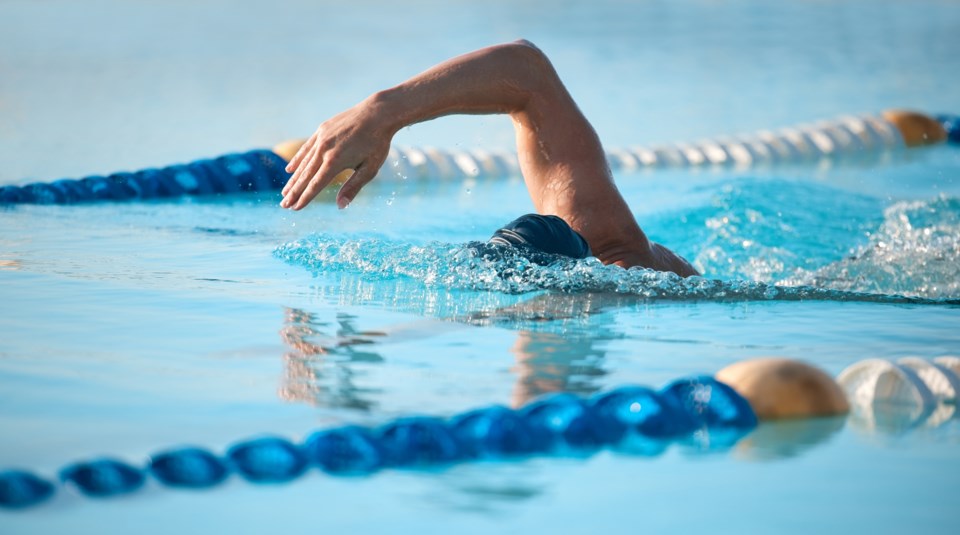Every year, hundreds of Canadians . Gaps in swimming lessons, lifeguard shortages and climate change may make water-based activities even riskier this summer.
Many of the protective factors that used to be in place — like swimming lessons and supervised settings for swimming — are in short supply, while warmer weather is encouraging people to find new, .
at the start of the COVID-19 pandemic led to millions of Canadians missing swimming lessons. With facilities now open across Canada, parents are having enrolling their children in the limited swimming lessons that are currently available.
As a result, many parents are concerned, fearing their children needed to be safe in, on or near the water. Though similar data is not available in Canada, one survey found that in Australia 55 per cent of parents in their child’s swimming skills between 2019 and 2021.
Lessons and lifeguards
Some studies have suggested that swimming lessons may play an important role in protecting children from drowning. However, the in drowning prevention is not particularly strong. In fact, some researchers have asserted that lessons might give parents a , resulting in them not closely supervising their children.
People with swimming skills may also overestimate their abilities and swim in , exposing themselves to dangerous conditions. So while there is concern about the lack of swimming lessons available to Canadians, an underrated drowning risk is swimming in unsupervised areas.
In Canada, occur in areas supervised by swimming instructors or lifeguards. However, these areas are currently in short supply. When COVID-19 forced pools and waterfronts to shut down, it halted all courses to train and certify lifeguards.
reported that in 2020 there were 60 per cent fewer candidates for lifesaving and lifeguarding courses and one-fifth of the usual number of swimming instructor candidates.
The reduction in lifeguards and swimming instructors has had a carryover effect in subsequent years. There are far fewer workers in the aquatic sector than pre-pandemic. Across Canada, the unemployment-to-job vacancy ratio is at , which is exacerbating low numbers of lifeguards and swimming instructors.
In some areas, former aquatics workers have been taking on other jobs that do not require such extensive and and levels of responsibility.
In fact, the shortage of aquatics staff is so great the Ontario government is considering revising the province’s Health Protection and Promotion Act to lower the minimum age of lifeguards to . Some municipalities are offering to and providing incentives like for picking up shifts.
Dangerous swimming
As supervised hours at and are scaled back due to staff shortages, and the , more people may turn to swimming in new or unsupervised locations to cool off. That could have .
People swimming in unfamiliar areas may not be aware of hidden hazards, like drop-offs or rocks, or be unfamiliar with . These dangers may not be signposted in unsupervised areas. Cold water can also be a danger, even during heatwaves in the summer months. that water below 21 C can be dangerous.
Even strong swimmers will struggle in cold water due to . Entering cold water can result in cold shock, which results in hyperventilation. If your airway is underwater while you hyperventilate, you can inhale water, which can lead to drowning. It is thus incredibly important to wear a lifejacket so that your airway remains above the water.
If you survive the cold shock phase, you could experience , which happens when your muscles and nerves get cold. That can lead to , which occurs when you can no longer keep your head above the water. Again, a lifejacket will play a crucial role in survival, as it will help you to stay afloat and may allow you to get to a safe location.
sets in when your body temperature goes below 35 C, which usually takes at least 30 minutes, though it depends on water temperature and body mass. A person with hypothermia can become unconscious; if they are wearing a lifejacket, they will continue to float.
While Canadians are facing enhanced risk related to water-based activities, there are ways to manage this risk: Swim in supervised areas. Wear a lifejacket while boating, especially in cold or unfamiliar water and if you are not a strong swimmer. Always swim with a friend. Stay within arm’s reach of children.
If you are the designated adult who is watching swimmers, put your distracting devices away and give them your full attention. Following these practices can help keep you and your loved ones safe this summer.
Audrey R. Giles receives funding from the Social Sciences and Humanities Research Council of Canada and Transport Canada's Boating Safety Contribution Program. She is a member of the Canadian Drowning Prevention Coalition.
Sofia Pantano and Umerdad Khudadad do not work for, consult, own shares in or receive funding from any company or organization that would benefit from this article, and have disclosed no relevant affiliations beyond their academic appointment.

